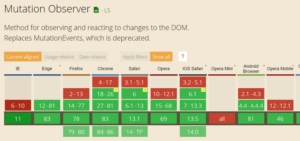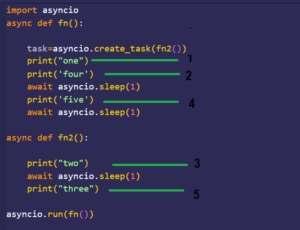The Symphony of Silence: A Comprehensive Guide to Addressing and Resolving Noises Emanating from Your Computer

In the digital orchestra of technology, a computer is often expected to perform its tasks seamlessly, humming along quietly in the background. However, the emergence of unexpected noises can disrupt this harmony, leaving users puzzled and concerned. In this extensive guide, we will explore the various types of noises a computer might produce, unravel their potential causes, and equip you with a comprehensive set of tips to diagnose, troubleshoot, and resolve these auditory disturbances.
Understanding the Ensemble: Types of Noises Your Computer Might Make
Computers are intricate machines with multiple components working in tandem. Various noises can emanate from different parts of a computer, each indicative of potential issues. Let’s explore the common types of computer noises:
**1. Fan Noises: The Whirring Ballet of Cooling Components
- Noise Description: A constant whirring or buzzing sound.
- Potential Causes:
- Dust Accumulation: Over time, dust can gather on fans, causing them to operate less efficiently and produce noise.
- Mechanical Wear: Wear and tear on fan bearings may result in noise.
- Incorrect RPM Settings: Fans running at incorrect speeds can generate unwanted sounds.
- Tips to Fix:
- Regularly clean dust from fans.
- Replace or lubricate fan bearings.
- Adjust fan speed settings through BIOS or dedicated software.
**2. Hard Drive Noises: The Melody of Storage Activity
- Noise Description: Clicking, grinding, or whirring sounds.
- Potential Causes:
- Failing Hard Drive: Clicking or grinding may indicate a failing hard drive.
- Excessive Read/Write Activity: Intense read/write operations can produce audible sounds.
- Loose Internal Components: Loose screws or components can vibrate and create noise.
- Tips to Fix:
- Backup data immediately if a failing hard drive is suspected.
- Monitor and manage disk activity using system tools.
- Ensure all internal components are securely fastened.
**3. Power Supply Unit (PSU) Noises: The Pulsating Symphony of Electricity
- Noise Description: Buzzing, humming, or high-pitched whining.
- Potential Causes:
- Voltage Fluctuations: Unstable power supply can lead to audible noises.
- Faulty Capacitors: Aging capacitors may produce whining sounds.
- Inadequate Cooling: Overheating PSU components can generate noise.
- Tips to Fix:
- Use a high-quality, stable power source.
- Replace a faulty PSU or capacitors.
- Ensure proper PSU cooling with adequate ventilation.
**4. Graphics Card Noises: The Visuals and Vocals of Gaming
- Noise Description: Whirring, buzzing, or clicking sounds.
- Potential Causes:
- Fan Issues: Similar to CPU fan problems, graphics card fans can cause noise.
- Coil Whine: High-frequency noise generated by electrical components.
- Overheating: Excessive heat can lead to noise from various components.
- Tips to Fix:
- Clean and maintain graphics card fans.
- Adjust fan speeds through graphics card control software.
- Ensure proper cooling and ventilation for the entire system.
**5. Optical Drive Noises: The Read-and-Write Waltz of Data
- Noise Description: Whirring, clicking, or humming during disc activity.
- Potential Causes:
- Dust or Debris: Accumulation of dust on the optical drive’s moving parts.
- Disc Misalignment: Misaligned or damaged discs can cause noise.
- Mechanical Wear: Aging components within the optical drive.
- Tips to Fix:
- Clean the optical drive carefully.
- Check discs for damage or misalignment.
- Replace the optical drive if mechanical wear is suspected.
Comprehensive Solutions for a Silent Symphony: A Step-by-Step Guide
**1. Diagnostic Tools: Unveiling the Source of the Symphony
- Steps:
- Task Manager: Monitor CPU, memory, and disk usage to identify heavy load scenarios.
- SMART Tools: Use SMART diagnostic tools to assess the health of hard drives.
- BIOS/UEFI: Check system BIOS/UEFI for fan speeds, voltages, and temperature readings.
**2. Cleaning Ritual: Banishing the Dusty Discord
- Steps:
- Turn Off and Unplug: Power down the computer and disconnect it from the electrical outlet.
- Open the Case: Carefully open the computer case to access internal components.
- Compressed Air: Use compressed air to gently blow away dust from fans, heatsinks, and other components.
**3. Fan Maintenance: Silencing the Whirring Winds
- Steps:
- Visual Inspection: Examine fans for visible dust, damage, or loose connections.
- Lubrication: For fans with accessible bearings, apply a drop of lubricant to reduce friction.
- Replacement: If a fan is excessively noisy, consider replacing it with a compatible model.
**4. Temperature Management: Cooling the Heated Crescendo
- Steps:
- Ventilation: Ensure proper airflow through the computer case by managing cable routing and using additional case fans if necessary.
- Thermal Paste: Replace the thermal paste on the CPU and GPU if temperatures are consistently high.
- Cooling Solutions: Consider aftermarket cooling solutions, such as upgraded CPU coolers or GPU heatsinks.
**5. Power Supply Considerations: Harmonizing the Voltage
- Steps:
- Stable Power Source: Use a stable power source with appropriate voltage levels.
- Replacement: If PSU noises persist, consider replacing the power supply with a high-quality unit.
- Monitoring Tools: Utilize PSU monitoring tools to check for voltage fluctuations and irregularities.
**6. Graphics Card Harmony: Fine-Tuning the Visual and Auditory Experience
- Steps:
- Fan Management: Adjust graphics card fan speeds through control software.
- Cooling Solutions: Install additional cooling solutions or optimize existing ones for the graphics card.
- Upgrade Consideration: If noises persist, consider upgrading to a more advanced graphics card with improved cooling.
**7. Optical Drive Serenity: Ensuring Smooth Disc Readings
- Steps:
- Clean Discs: Ensure discs are clean, free from scratches, and properly aligned.
- Optical Drive Replacement: If noises persist, consider replacing the optical drive with a new or refurbished unit.
Proactive Measures for a Lasting Crescendo of Silence: Sustaining a Noise-Free Environment
While the solutions provided address immediate concerns, implementing proactive measures ensures a lasting symphony of silence in your computing environment. Consider the following tips to maintain a noise-free experience:
**1. Regular Maintenance Schedule:
- Set up a routine for cleaning and inspecting internal components, ensuring optimal performance and reduced noise.
**2. Temperature Monitoring:
- Use software tools to monitor component temperatures regularly, adjusting cooling solutions as needed to prevent overheating and noise.
**3. Quality Components:
- Invest in high-quality components, including fans, power supplies, and cooling solutions, to minimize the risk of noise-related issues.
**4. Upgrade Strategically:
- Plan component upgrades strategically, considering noise levels and compatibility with existing hardware.
**5. Noise Reduction Techniques:
- Explore noise reduction techniques, such as acoustic foam, anti-vibration mounts, and soundproof cases, for a quieter computing experience.
**6. Professional Consultation:
- If noise issues persist despite troubleshooting efforts, consult with professional technicians or support forums for expert assistance.
Conclusion: Achieving Harmony in the Digital Symphony
In conclusion, addressing and resolving noises emanating from your computer involves a systematic and informed approach. By understanding the types of noises, identifying their potential causes, and implementing the comprehensive set of tips provided, you can achieve a harmonious and silent digital symphony.
Remember that each computer is unique, and the solutions may need to be tailored to specific hardware configurations. By embracing proactive measures and staying vigilant in maintaining your computer’s health, you can ensure a noise-free computing environment, allowing you to focus on your tasks without the disruptive background noise.




